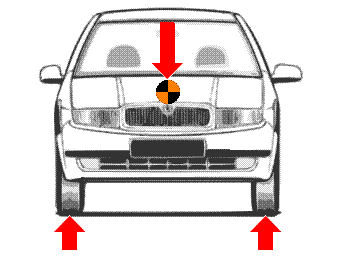Performance
We already said it, vehicle performance is measured by its acceleration.
Lateral acceleration is often used as a performance «yardstick». For braking, we usually use the «100-0 km/h» distance. For acceleration, we usually use the time from the «¼-mile» or the «0-100 km/h». All of these measurements depends solely on the acceleration capability of the vehicle.
The tire friction coefficient will be the most important factor affecting maximum acceleration in any direction. The stickier, the better.
Once that is set, some basic vehicle dimensions and configurations will limit what you can get out of the tires. No matter what type of suspension, brakes, engine or transmission you will use.
By introducing some aerodynamic downforce (or negative lift), you can extend those limits, even eliminate them.
At high speed, the maximum longitudinal acceleration is usually limited by the amount of power available at the wheels, no matter what type of engine or transmission is used.
Weight transfer

The major effect of the basic vehicle dimensions is weight transfer. Weight transfer is unavoidable. Although, with proper suspension design, it can be redistributed between two different wheels to maximize performance.
So, in most cases, the «perfect» vehicle would always have 25% of the total vertical force (weight and downforce) on each tire.
Theory
The preceding is an organizational chart showing how acceleration and other related criteria are calculated.
Click on a subject for more info. The chart is reproduced on every page. Each page explains the theory used for the ACCELERATION SIMULATOR.